Alap 1967
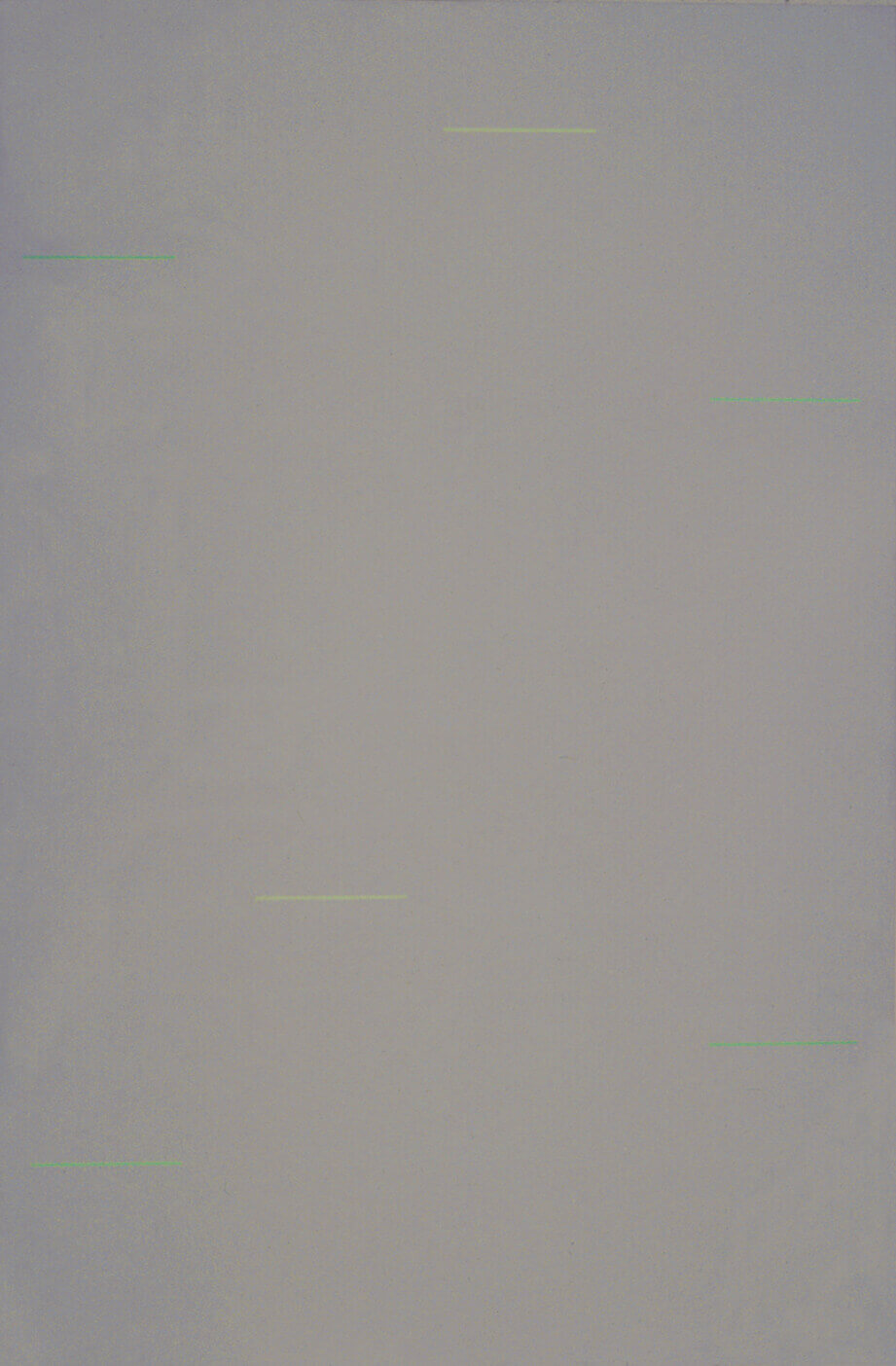
Yves Gaucher, Alap, 1967
Acrylic on canvas, 274.3 x 182.9 cm
Art Gallery of Alberta, Edmonton, © Estate of Yves Gaucher / SODRAC (2015)
Alap is from Gaucher’s Grey on Grey series. Over the course of two years, he executed some sixty Grey on Grey paintings, far exceeding the twelve he had initially projected. The narrow range of tonalities and almost transcendent mood created by the greys was particularly conducive to subtle variations.
Originally the series was to be titled Alap, referring to the opening of the classical raga, but he eventually substituted a letter-number formula, denoting the colours used and the date of execution. The paintings are all composed as uninflected roller-painted fields of grey across which are dispersed thin longer or shorter lines in white or grey tonalities that run strictly parallel to the upper and lower framing edges.
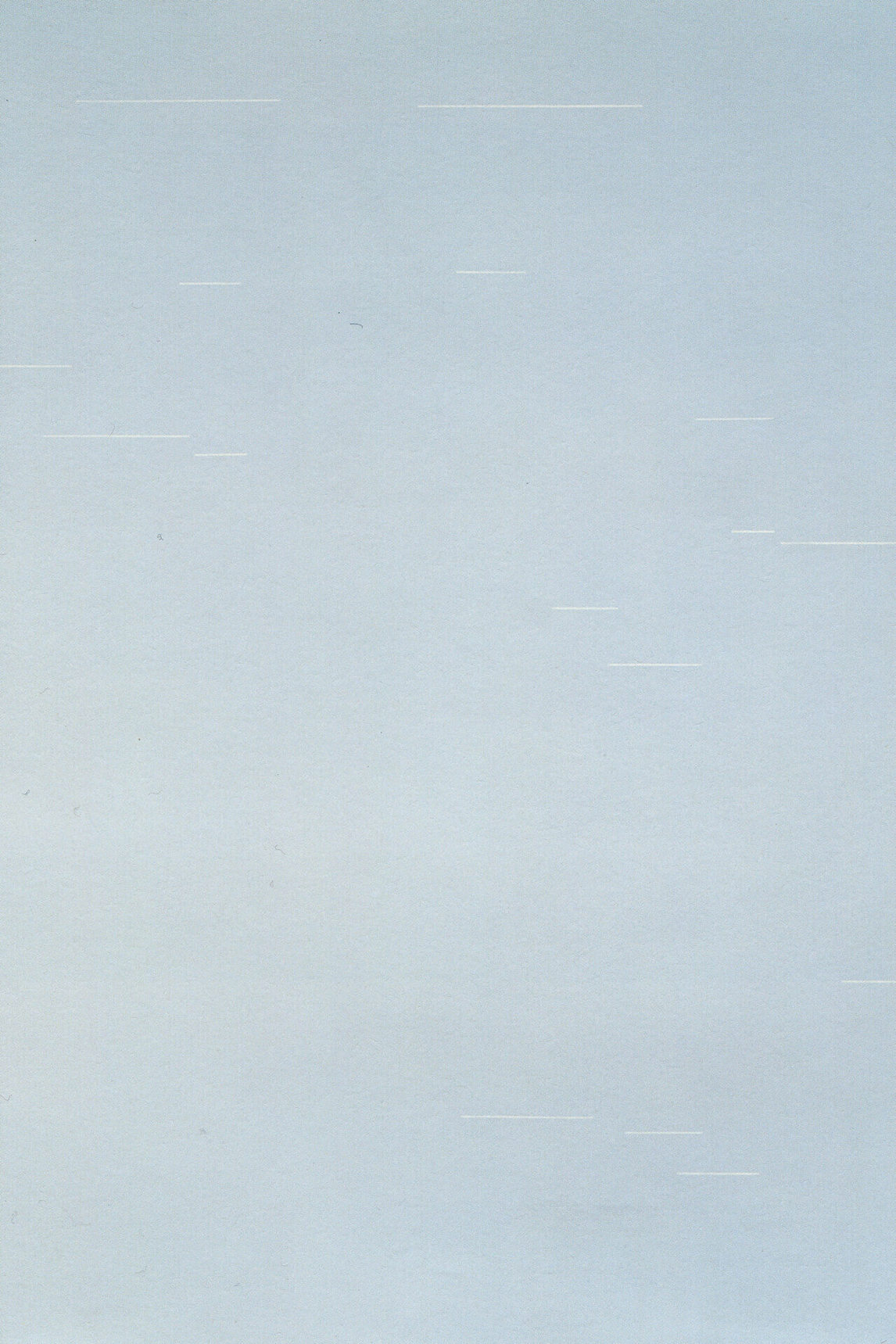
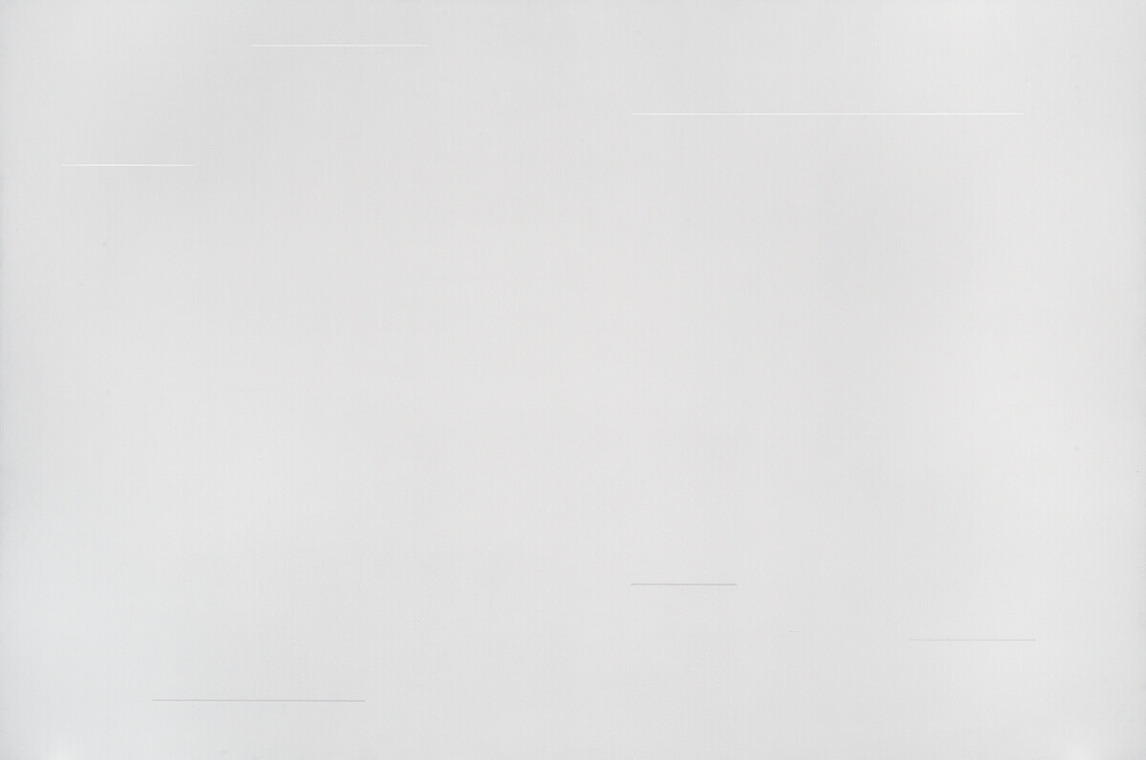
The series began in symmetry, like Alap, with its easily parsed structure of inverted, lateral symmetry. Even so, as in the In Homage to Webern prints, it is difficult if not impossible to fix the painting in one’s vision as a stable configuration. Instead, the individual lines seem to cut free from their formal moorings, deflecting the eye from one to the next with speeds and in directions that seem entirely spontaneous.
In subsequent paintings symmetry vanishes altogether; only Gaucher’s well-practised intuition determines the exquisitely tuned details of line lengths, tonalities, and relative placements. Despite their limited means, the emotional range of the paintings is astonishing. Thus the broad horizontal stretch of JN-J1 68 G-1, 1968—articulated by only some six sparsely distributed line signals—is a majestically generous invitation to prolonged reverie. In contrast, R-M-111 N/69, which comes near the end of the series, is altogether brittle, quick, and edgy. Colour matters too insofar as the grey field of each painting is subtly tinted. This may register only subliminally but becomes apparent when the works can be compared side by side. (The paintings are titled by letter-number formulas that denote the colours with which their basic grey is inflected.)
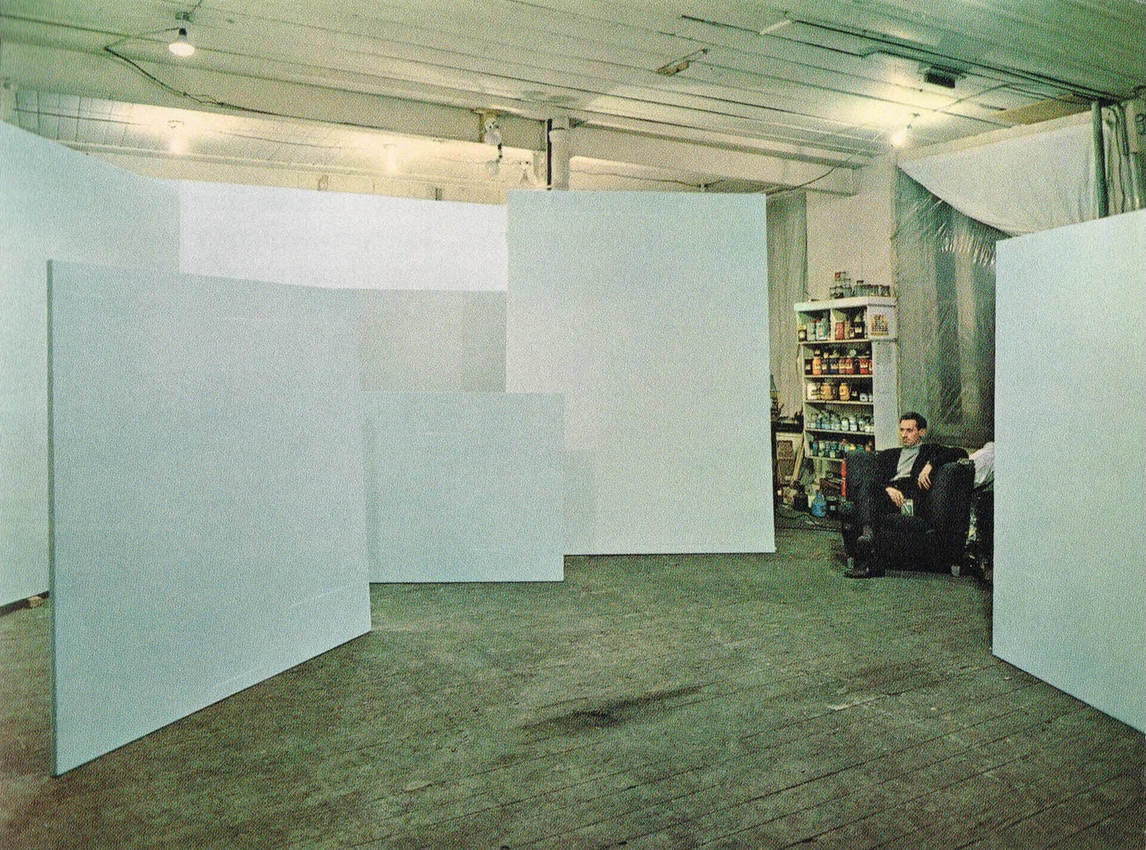
Gaucher’s first visit to Paris in the fall of 1962 had introduced him to the music of Anton Webern, a discovery pivotal to the evolution of his energized compositional structures. As important was the 1961 retrospective of the Abstract Expressionist Mark Rothko (1903–1970) at the Museum of Modern Art in New York, which he saw for a second time in Paris. Not only was he overwhelmed by the size of Rothko’s paintings, but, as he later explains, they helped him to rethink how a painting ought to function in relation to its viewers: “It’s not what you see … it’s not what you analyze … but the state of trance that you can be put into by the work. The state of trance is yours … the work is the trigger, but it had to do with the spectator.” The Grey on Grey series fulfills these realizations.
Gaucher stopped the series at the end of 1969, having explored, as he explained, “the essential issues of the dialectic expressed in the Weberns of 1963.” It was impossible to add to it in a significant way. Seen as an ensemble, and as an environmental installation, as they were for the first time at the Whitechapel Gallery in London, England, in 1969, the Grey on Grey paintings add up to one of the grand achievements of postwar abstract painting. The British critic and curator Bryan Robertson describes them as “possibly the most beautiful and original—and awe-inspiring—paintings I’ve seen anywhere since the advent of Pollock and Rothko.”

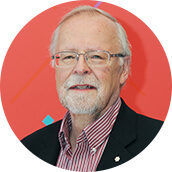 About the Author
About the Author
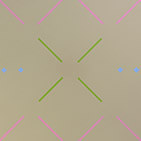 More Online Art Books
More Online Art Books
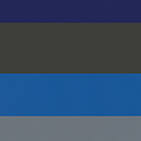 Acknowledgements
Acknowledgements